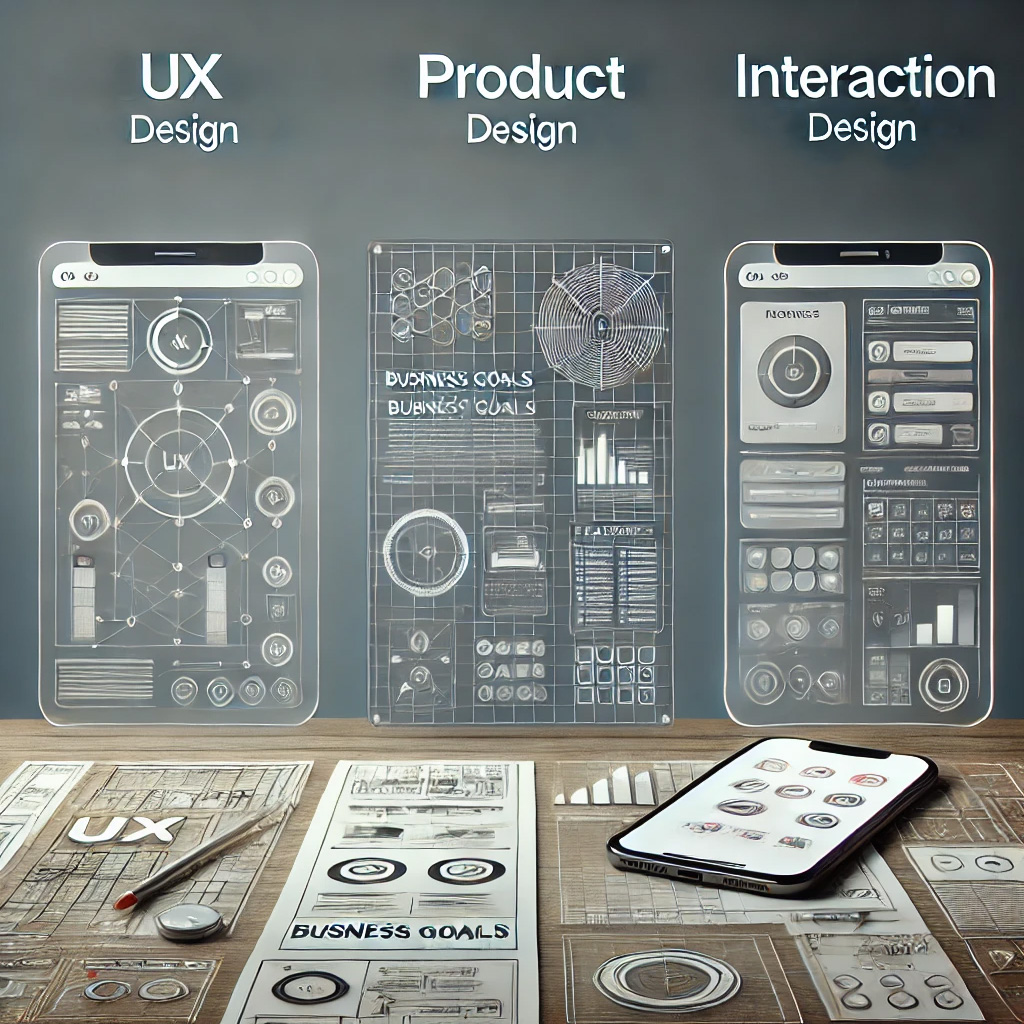In the world of design, the terms UX, Product, and Interaction Design are often thrown around interchangeably. But, like siblings with their own quirks, these three disciplines have distinct personalities that shape how they interact with both users and the business.
UX Design is all about creating a seamless and intuitive experience for users as they navigate through digital products. It’s like being the host at a fancy dinner party, ensuring every guest feels comfortable, entertained, and fed with the least amount of effort. From initial research, wireframes, and prototypes to usability testing, the UX designer takes the user’s hand and guides them from A to Z, smoothing out every bump along the way. It’s empathy-driven and highly focused on the user’s journey.
Product Design, on the other hand, has a broader scope. Imagine being the architect and the project manager rolled into one. Product designers not only think about how a product looks and feels, but also consider its viability, market fit, and long-term success. They’re not just asking, “Is this easy to use?” but also, “Is this solving the right problem? Does it align with business goals?” It’s a strategic role that balances user needs with business realities.
Finally, Interaction Design is where things get tactile—or at least as tactile as digital design can be. Think of it as the choreographer of the user’s movements through an interface. Interaction designers focus on the way users interact with digital elements: buttons, gestures, and transitions. They ask questions like, “How should this element respond when clicked?” or “What motion conveys feedback best?” It’s the layer of design that brings user experiences to life through thoughtful, sometimes invisible, animations and interactions.
While these roles overlap and complement one another, the real difference lies in their focus. UX is about the overall experience, Product Design takes a wider lens to solve problems with both users and the business in mind, and Interaction Design fine-tunes the micro-moments that make a product delightful.
Each discipline plays its part in creating products that users don’t just tolerate but love—because in the end, it’s all about making life that little bit easier (and, dare I say, enjoyable).
Resources
“The Design of Everyday Things” by Don Norman
A foundational book for anyone in UX or Interaction Design, this classic explains the principles behind intuitive design. Don Norman’s focus on affordances, signifiers, and user-centred design aligns perfectly with the goals of both UX and Interaction Designers, who aim to create seamless, intuitive experiences for users.
“Lean Product and Lean Analytics” by Ben Yoskovitz and Alistair Croll
This book provides essential insights for Product Designers, focusing on data-driven decision-making and aligning product strategy with business goals. It’s particularly valuable for understanding how to create products that not only solve user problems but also fit market needs and ensure long-term success.
“About Face: The Essentials of Interaction Design” by Alan Cooper, Robert Reimann, David Cronin, and Christopher Noessel
This comprehensive guide delves deep into Interaction Design principles, offering practical advice on creating intuitive and effective user interfaces. It’s ideal for anyone looking to master the finer details of user interactions, from micro-moments to the broader user journey.
“Hooked: How to Build Habit-Forming Products” by Nir Eyal
Nir Eyal’s book is a perfect resource for understanding how to design products that engage and retain users. It’s particularly useful for Product Designers, offering insights into the psychology of user behaviour and how to create products that people keep coming back to, which is often a key business objective.
“Don’t Make Me Think: A Common Sense Approach to Web Usability” by Steve Krug
This book is a go-to for UX Designers, providing clear, actionable advice on designing intuitive user interfaces. Steve Krug’s emphasis on simplicity and usability ties into the core goals of UX Design: making digital products easy and enjoyable for users to navigate without frustration.

0 Comments